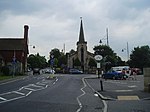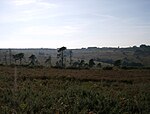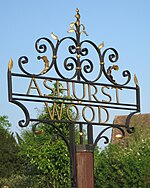Ashdown House, East Sussex

Ashdown House is a country house and former school near Forest Row, East Sussex, England, a Grade II* listed building. One of the first houses in England to be built in the Greek Revival architectural style, it was designed in 1793 as the second independent work of Benjamin Henry Latrobe, his last work in Britain before emigrating to the United States. Latrobe's domes at Ashdown have been described by scholars as 'miniature prototypes' for his domes at the United States Capitol. Described by Nikolaus Pevsner as 'very perfect indeed', the building served as a prep school from 1886 to 2020, educating many people, of whom several became notable.In August 2021 the property was sold to a property developer for £5 million. Richard Eden confirmed that the owner, Cothill Trust, had exchanged contracts with the developer, whose name was not disclosed. The next highest bidder was reportedly an educational establishment that offered the trust £4.5 million.
Excerpt from the Wikipedia article Ashdown House, East Sussex (License: CC BY-SA 3.0, Authors, Images).Ashdown House, East Sussex
Forest Way, Wealden Forest Row
Geographical coordinates (GPS) Address Nearby Places Show on map
Geographical coordinates (GPS)
| Latitude | Longitude |
|---|---|
| N 51.1025 ° | E 0.0629 ° |
Address
Forest Way
TN7 4JG Wealden, Forest Row
England, United Kingdom
Open on Google Maps








